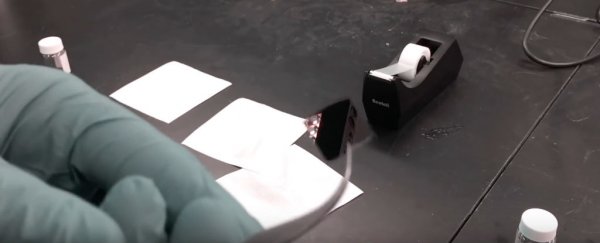
Three words: Graphene. is. awesome. Not only is it stronger than steel, harder than diamond, but also incredibly flexible, just this week, researchers in Japan figured out how to turn it into a superconductor - where electricity can flow with no resistance. It's been tipped to revolutionise everything from touchscreens and batteries to water treatment processes and lightbulbs. Graphene is everywhere right now, and you can get in on the action by making some really easily at home.
As the video from the Harvard John A. Paulson School of Engineering and Applied Sciences explains, here's what you're gonna need:
- A microchip
- Graphite crystals - you can buy them really cheaply online
- Tweezers
- Scotch tape
First off, you'll need to cut a piece of the scotch tape, and sprinkle one of the graphite crystals onto the sticky side. Fold the tape onto itself and peel it back off again so the crystal is gently pulled apart. Do this a few times to peel layer after layer of the crystal away.
Next, cut another piece of tape, and lay it down on top of your original piece. Separate them again, and stick the new piece of tape onto the microchip. Press down onto the microchip to make sure everything is sticking in place, and remove the tape. Easy as that, you now have a microchip covered in graphene and graphite flakes!
If you'd prefer doing horrible things to your blender in the name of science, there's actually an alternative method for making graphene at home. As Richard Van Noorden writes over at Nature, the recipe was found buried deep in the supplementary information of a research paper published back in 2014, as a way to cheaply and easily make large quantities of graphene flakes.
"[T]hey took a high-power (400-watt) kitchen blender and added half a litre of water, 10-25 millilitres of detergent and 20-50 grams of graphite powder (found in pencil leads). They turned the machine on for 10-30 minutes. The result, the team reports: a large number of micrometre-sized flakes of graphene, suspended in the water," says Van Noorden.
We're not saying you should start your own backyard graphene manufacturing plant, although if you could guarantee quality and figure out how to make the process cost-efficient, there's a whole lot of cash in it for you. Just remember us when you're rich and famous, okay?
Here's another demonstration of the tape method:

